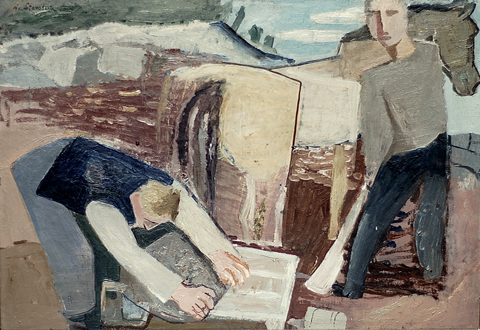Intergenerational: The Work of Aage Storstein and Matthew Storstein
Open daily 9am to 4.30pm, excluding Sundays.
Opening Night: Friday September 7th, 5pm - 8pm, All Welcome
As the Norwegian Seamen’s Church that houses the Leith School of Art enters its 150th anniversary this year, we celebrate the links between our community here in Edinburgh and in Norway.
As part of these celebrations, this exhibition brings together the work of Leith School of Art tutor Matthew Storstein and his grandfather - the eminent Norwegian painter Aage Storstein.
Born in Stavanger in 1900, Aage lived most of his life in Norway, but took up study in Paris in the 1920s, where he absorbed the influence of modernist painting. Here he developed a distinctive style of cubism and went on to show at the 1937 ‘Exposition Internationale des Arts et Techniques dans la Vie Moderne’ in Paris. In 1938 he won a competition to design the West Gallery in Oslo City Hall, filling the walls with a set of cubist murals depicting Norwegian life, history and mythology. In 1946 he began teaching at the Norwegian National Academy of Fine Arts where he became head professor. His work can be found in major collections including the Oslo National Gallery and the Moderna Museet in Stockholm.
Matthew Storstein studied Painting at The Glasgow School of Art, graduating in 1996. He has taught at Leith School of Art since 2000, alongside co-directing Edinburgh’s Hidden Door Festival. Of his work, Matthew writes:
‘I am drawn to objects that don’t seem to have any obvious meaning, or at any rate, any particularly interesting meaning. This apparent emptiness allows the objects to speak of things other than themselves. As you look, the banality gives way and is replaced by a profound, absurd and unsettling beauty.’

